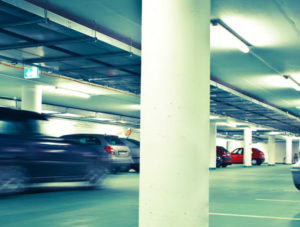Finding parking in a crowded garage is already difficult enough. Good luck locating open spots when entire sections are cordoned off for renovations!
It’s ironic that closing a garage for smart parking system installation could temporarily make the parking situation worse. Parking is already competitive enough — even the smallest dip in availability can trigger a wave of chaotic and angry drivers, and any facility disruption can easily become a nightmare.
Fortunately for facility managers, installation doesn’t have to be a headache. If you choose the right system provider, installing and managing a smart parking system can be an incredibly unobtrusive – even smooth – process.
What the smart parking system provider does for facility managers
Parking management system installation requires complex coordination, several steps and precautionary test runs. This multi-week or even multi-month process can make facility managers uneasy for three reasons: parking spot availability, changing navigation and disruption of the facility’s regular routine.
However, just because the process is long doesn’t mean that a facility manager’s worst fears will come true. The proper provider can ensure proper availability, clear navigation and interrupted schedules in a few important ways:
- A reliable smart parking system provider stays out of the way as much as possible. Employees and visitors can’t change their schedules because the parking garage is out of order. To that end, it’s important to make sure that the parking management system provider operates in a manner which won’t require garage closures. Oftentimes, this means that the system is installed a few spaces at a time, instead of working on hundreds of spaces at once.
- The provider should have extra staff on hand to help drivers navigate the garage during installation. Sometimes, installation will inevitably impact typical garage function. Disruptive installation processes, such as sensor placement at the entry and exit points, is an obvious intrusion for employees and visitors alike. Ask the parking management system provider if he or she can provide someone to help guide cars around these tricky obstacles during installation.
- Ask if the installation team will work on weekends or other atypical times. Operating a few spots at a time and having extra staff on hand certainly eases parking during installation. However, if a major interruption is unavoidable, it shouldn’t have to occur when the building is completely occupied. Check that your provider is willing to come in on Saturdays, Sundays or other off-hour periods to avoid severe disruptions.
A trustworthy provider not just understands, but sympathizes with, concerns the invasiveness of the installation process. System setup can easily be achieved in small segments or phases that, at most, minimally alter typical facility function. This keeps the overwhelming majority of garage operations running exactly as well as before, and it ensures that the job isn’t rushed.
It all sounds good on paper, but how does that work in practice?
Putting “conscious installation” to work: a Kyosis case study
When Colgate-Palmolive in Piscataway, N.J. decided that they needed a parking management system for its 589-space garage, they knew the installation process couldn’t prevent employees and visitors from arriving on time. To accommodate, Kyosis worked with Colgate-Palmolive to create an installation schedule which respected operating hours and kept as many spots open as possible, all while maintaining a timely installation schedule.
The Kyosis installation team only closed off around 20 spots at a time, taking care to properly place the LED vacancy lighting system without squeezing employees out of their parking spots. The team came on weekends when necessary and avoided working during peak entry and exit times. Kyosis even made sure that a team member was available to navigate drivers during entry/exit sensor installation.
When in the right hands, parking management systems can be installed with minimal outward impact. With such convenient installation, disruptions on standard traffic flow within a facility are kept to a minimum, as are the frustration, anger, and disappointment of not just facility operators, but the most important people: the drivers.

